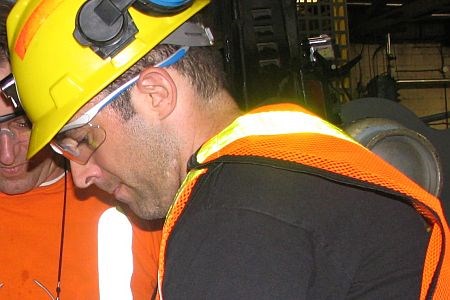Standing vibration. It is a term used by industry workers who stand on a platform connected to operating drills and it is just one workplace concern targeted by the newly formed Centre for Research in Occupational Safety and Health (CROSH) at Sudbury's Laurentian University.
The wealth of health and safety-related knowledge developed among Laurentian researchers, bred through endless work for the local mining industry, is being consolidated in this new centre after a year's worth of discussion.
"What we wanted to try to do is provide some focus and support for all these researchers, we wanted to try and move away from individuals doing research in an area and try provide some focus," says Sylvain Grenier, director of CROSH and associate professor with Laurentian's Human Kinetics program.
"One of the things that results from that is collaborations, and... it gives industry a place to go."
If people are encountering problems, we have the expertise, he said.
After securing Senate support this summer, CROSH is now an official part of the landscape of research centres within Laurentian University.
The centre is already up and running with 12 researchers from a range of disciplines, such as engineering, human kinetics, nursing and the Northern Ontario School of Medicine. The numbers may later expand as gaps in research expertise will be filled, in part by collaborating with other universities and organizations.
The summer months have been spent spreading the word and developing partnerships with key partners such as the Occupational Health Clinics for Ontario Workers (OHCOW) and the Mines and Aggregates Safety and Health Association.
Some private-sector requests have already begun to filter in, particularly from Vale Inco, which has identified areas they wish to study. While the strike has put the brakes to that particular collaboration, Grenier expects things will ramp up once the labour dispute is settled.
This level of industry involvement will be key as CROSH moves forward with plans to build a $10-million addition to the Ben Avery building at Laurentian University.
Once built, some operational funding would stem from industry since it would benefit from the solutions being generated. Funding could also come from a percentage of the researchers' consulting contracts or grants.
A grant application to the Canada Foundation for Innovation to begin construction has already been turned down, though the CROSH team is regrouping and looking to other funding sources to make the physical dream a reality within five years.
With 30,000-square feet of lab space and a dozen offices for researchers, the centre would also require the hiring of various support staff. However, even if funding problems persist, CROSH will still continue to operate within the researchers' individual offices throughout Laurentian as the physical building would be "advantageous but it's not essential."
In the meantime, the team is already looking at follow-up research on a four-year look into line-of-sight concerns which is still being concluded by some CROSH researchers.
www.laurentian.ca




